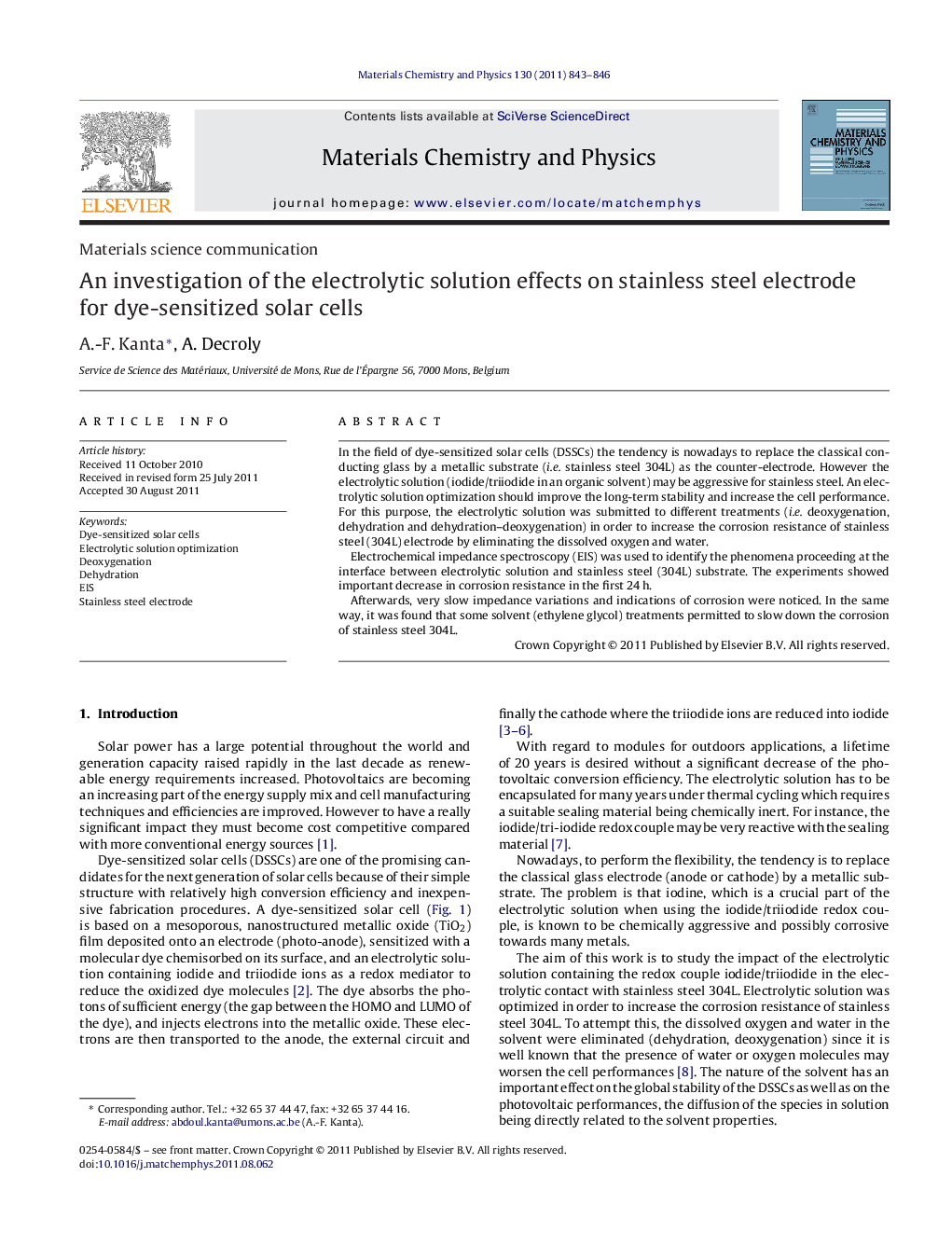| Article ID | Journal | Published Year | Pages | File Type |
|---|---|---|---|---|
| 1523485 | Materials Chemistry and Physics | 2011 | 4 Pages |
In the field of dye-sensitized solar cells (DSSCs) the tendency is nowadays to replace the classical conducting glass by a metallic substrate (i.e. stainless steel 304L) as the counter-electrode. However the electrolytic solution (iodide/triiodide in an organic solvent) may be aggressive for stainless steel. An electrolytic solution optimization should improve the long-term stability and increase the cell performance. For this purpose, the electrolytic solution was submitted to different treatments (i.e. deoxygenation, dehydration and dehydration–deoxygenation) in order to increase the corrosion resistance of stainless steel (304L) electrode by eliminating the dissolved oxygen and water.Electrochemical impedance spectroscopy (EIS) was used to identify the phenomena proceeding at the interface between electrolytic solution and stainless steel (304L) substrate. The experiments showed important decrease in corrosion resistance in the first 24 h.Afterwards, very slow impedance variations and indications of corrosion were noticed. In the same way, it was found that some solvent (ethylene glycol) treatments permitted to slow down the corrosion of stainless steel 304L.
► Flexible stainless steel 304L electrode for DSSC. ► EIS used to investigate electrolyte/stainless steel interface phenomena. ► Electrolytic solution (iodide/triiodide) is corrosive towards stainless steel. ► Treatments of electrolytic solution for increasing the corrosion resistance.
